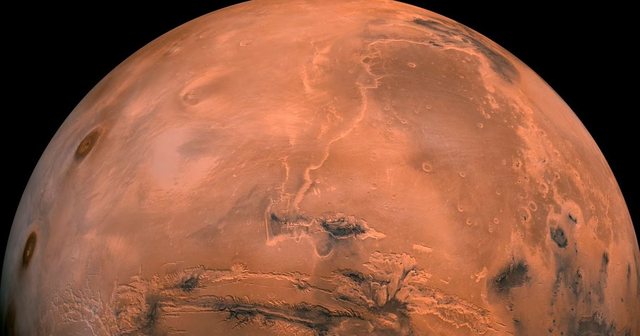
New study: Here's why the planet Mars is red


New research shows that the mineral rust that covers the surface of Mars contains small amounts of water, suggesting a cold, wet past. Scientists say it could also help them understand when Mars turned into a desert covered in oxidized iron dust.
Hundreds of spacecraft have studied Mars for decades. Scientists have known for years that the planet's surface, with its landscapes of dried-up lakes and rivers, hints at a past when liquid water was present. Missions have discovered ice deposits several kilometers below the surface at the planet's poles. The Perseverance probe is expected to return a host of samples within the next decade that could help us learn more about the red planet.
Previous missions to Mars have provided detailed data on the red-dusted planet's surface. The research team says it used new laboratory techniques to show that Mars' red color is created by iron oxides that contain small amounts of water. The study was recently published in the journal Nature Communications.
The team says iron oxide forms quickly in the presence of cold water, suggesting it may have formed when Mars still had water on its surface. Colin Wilson, who leads the European Space Agency's Mars research, was not directly involved in the latest study. He says the results show that the rust found on Mars, some 140 million miles away, is not that different from the phenomenon we see on Earth.
"The atmosphere of Mars is extremely dry, only a few hundredths of a percent is water vapor, so it would be an extremely dry form of rust. But the latest study, which was conducted through a combination of observations from American and European probes, shows that the type of rust found on Mars is much more similar to the rust we know on Earth, which is not as dry oxidized iron, but actually has a significant water content in it."
The study's lead author, Adomas Valantinas, began his research on Mars at the University of Bern and finished it in the United States at Brown University. He says the new research explains how the planet became so red.
"Basically, the study confirms all the previous findings about the presence of liquid water in the past. But it changes the worldview about the red color of the planet and the iron oxide. So we know that this happened when there was liquid water and there may also have been some form of oxygen, perhaps from water or another source, which explains the oxidation process, or rust." Mr. Valantinas says that other research suggests that changes in the watery environment of Mars must have happened billions of years ago, although this is speculation.
"We know from other studies about the presence of liquid water, let's say about 3 billion years ago. Oxidation could have occurred during this period."
According to Mr. Valantinas, winds may have spread the rust-altered dust across the planet, and there was no rainfall to wash it away, so it is still there. Although scientists have evidence that Mars once had water, they still don't know where it might have come from, he says. He says he is looking forward to samples being brought back to Earth to confirm the findings made in the lab.
However, NASA's plan to bring samples from Mars to Earth is pending the finding of a faster and less expensive way, according to officials./ VOA

ideas
top
Alfa recipes
TRENDING 
services
- POLICE129
- STREET POLICE126
- AMBULANCE112
- FIREFIGHTER128































